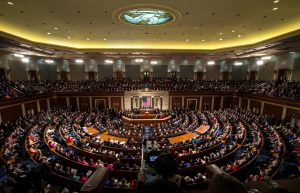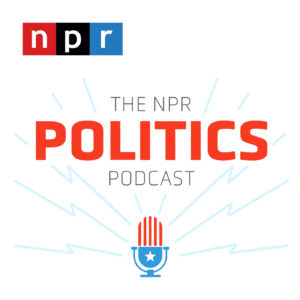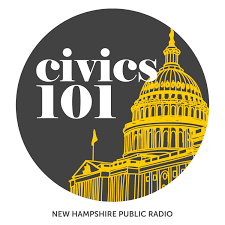
Article II, Section 3 of the U.S. Constitution calls on the President, “from time to time,” to “give to the Congress Information of the State of the Union, and recommend to their Consideration such measures as he shall judge necessary and expedient.” Nearly every year since the nation’s founding, presidents have fulfilled this Constitutional obligation by delivering a message to Congress—from the 1890’s through the early 1900’s, that usually consisted of a written letter. When President Woodrow Wilson entered office, the written letter was substituted for an in-person speech to Congress, and has been that way since. Though many of the rituals of the State of the Union speech are ceremonial and symbolic in nature, presidents have often used their speech to put certain issues at the center of public attention, map out a larger policy agenda, and press Congress to enact their boldest, most sweeping proposals.
Beginning with the age of television, the State of the Union is probably best known for the many informally adopted (and sometimes quirky) customs, from the dozens of standing ovations the President receives, to the inclusion of guests in the Gallery whose stories help illuminate some of the President’s main arguments, to the scripted responses to the State of the Union from members of the opposing party. At the same time, the President’s address has served the symbolic purpose of demonstrating national unity above factional interests. In almost all public addresses, presidents declare the state of the union as “strong” and invoke sweeping rhetoric to encourage all Americans to stand united in the pursuit of common purposes.
In recent years, as partisan rancor has increasingly divided Americans, however, lawmakers have begun to demonstrate emboldened resistance to ideas laid out in presidents’ State of the Union addresses. During a 2009 national address (the equivalent of a State of the Union delivered in a president’s first year in office), one Congressman interrupted President Obama’s speech with the exclamation, “You lie!” In 2020, Speaker of the House Nancy Pelosi tore up her copy of the text of President Trump’s State of the Union. Although not without precedent in earlier eras of deep division between political parties, instances of interruption, heckling, and division have become more prominent in the past decade, leading some people to draw comparisons between the State of the Union and forms of outbursts among political leaders in other political democracies around the world.
Some political commentators believe that all the ceremony surrounding the State of the Union is excessive and would like to find ways to downplay the importance of the speech. But in a modern, digital-driven society, it is unlikely that the customs of the State of the Union will change significantly anytime soon. Every year, civically engaged individuals consider the President’s articulated annual goals through the State of the Union speech; how political opponents articulate an alternative vision; the reasons used to describe the State of the Union as “strong”; and how we can make sense of the importance of the President’s words in our daily lives and those around us.
This week’s Current Events resources examine the State of the Union. The resources shared provide historical content and modern day context around the presidential tradition.
Looking for more current events resources? Sign up at our We the Teachers Educator Resource Community page, where you can find all of our Current Events, and learn about our other programs!
Essential Questions, Vocabulary & Extend the Resources:
- What are the Constitutional origins of the State of the Union?
- How does the State of the Union fit into the idea of checks and balances?
- How does the State of the Union help amplify a president’s agenda?
- What led to the change in the way the State of the Union is delivered? How do you see the delivery changing in the future?
- Based on this year’s State of the Union, what are the President’s major goals and priorities?
- In their recent address, how does the President characterize the state of the union? What evidence do they use to support their claims?
- In your opinion, does the current way the State of the Union is delivered align with what the Constitution prescribes?
Click here for a hardcopy of the Essential Questions & State of the Union Vocabulary
Click here for a hardcopy of the Extend the Resources handout with suggested lesson activities and extensions
Videos:
Podcasts:
The State of the Union Address, Civics 101
The State of the Union Address (A History), History Teachers Talking

At the State of the Union, Biden Wooed Moderates and Slammed Putin, The NPR Politics Podcast, March 1, 2022
Brooks and Capehart on war in Ukraine, Biden’s priorities after State of the Union, PBS NewsHour, March 4, 2022
Background Resources:
The President’s Annual State of the Union Address, Explained, History, 2020
First Annual Address to Congress Mt. Vernon, Accessed March 3, 2022
The Importance of Decorum, National Conference of State Legislatures, 2006
Comparing Legislature Etiquette Standards In Other Democracies:
Rules and Traditions of Parliament, UK Parliament, 2022
Rules of Decorum, House of Commons, Canada
Parliamentary Decorum and Etiquette, Parliament of India
Recent Articles:
Why is this Biden’s 1st State of the Union even though it’s his 2nd year in office? ABC10, March 1, 2022
A Recap of President Joe Biden’s State of the Union Address, National Law Review, March 3, 2022
Biden bids to talk up ailing agenda after State of the Union draws mixed reviews, The Guardian, March 2, 2022
Manchin Sits with Republicans, Stands with Democrats, Axios, March 1, 2022
Recent Editorials:
My Three-Point Plan To Fix the State of the Union, National Review, March 3, 2022
Progressives Found a Lot to Like in Biden’s State of the Union, Rolling Stone, March 2, 2022
Rep. Boebert’s State of the Union heckle disrespected the president and veterans like me, USA Today, March 2, 2022
Biden’s State of the Union—a Turning Point in History?, Brookings Institute, March 2, 2022
Parliament has become aggressive but censoring MPs isn’t the solution, The Telegraph, Sep 26, 2019
Lesson Plans:
The State of the Union Address, Choices Program, Brown University
Activity: Discuss President Biden’s State of the Union address, PBS NewsHour, March 2, 2022
The State of the Union Address, C-SPAN Classroom, January 13, 2020
State of the Union, Flocabulary
State of the Union Bingo, National Constitution Center
Lesson Plans for Elementary Students:
State of the Union: Key points from Biden’s speech, with focus on war raging in Ukraine, Newsela, March 2, 2022
Media & News Literacy Lesson Plans:
Media Literacy Resources – Newseum
Resource Library – News Literacy Project
News & Media Literacy Lessons – Common Sense
Media Misinformation, Viral Deception, and «Fake News» – University of Wyoming
Evaluating Sources in a ‘Post-Truth’ World: Ideas for Teaching and Learning About Fake News – New York Times Lessons



